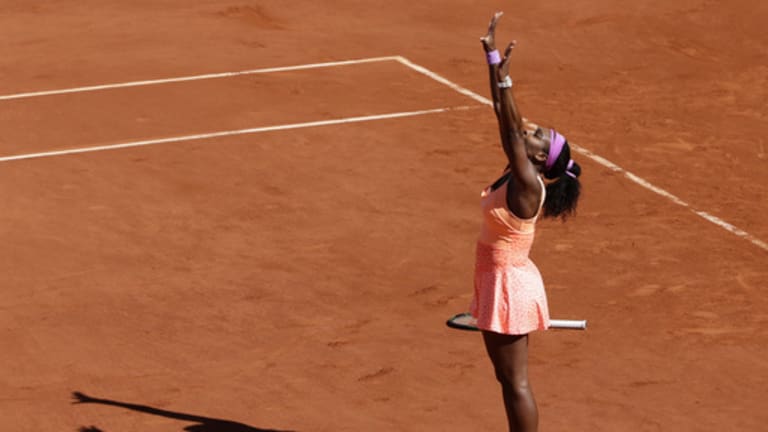When Serena Williams tossed the ball to serve at 4-1, 15-0 in the second set of the French Open final on Saturday, she must have thought the worst was finally behind her. The flu, the day spent in bed, the coughing fits, the three-set matches, the comebacks from the brink of disaster, the sturm, the drang: She had left them all behind, as well as her final-round opponent, the stubborn but overmatched Lucie Safarova. Surely now she was on her way to her 20th Grand Slam singles title.
Not so fast: Just when Serena’s body had been defeated, her mind decided to get in the way.
Serena double-faulted. OK, no problem; she quickly followed with an ace and a forehand winner for 40-15. Just five more points to go. But Serena did something funny after she hit that forehand winner. She jumped high in the air to celebrate. At the time, it looked like she might be practicing her victory leap. In reality, she was happy because she had, for the moment, fought through the thicket of nerves that she could feel growing inside her.
It turned out that this would be Serena’s last happy moment for the next hour or so. Instead of cruising to major No. 20, she found herself pinned down by those nerves and unable to swing her way free. Serena double faulted two more times in that game, two more times in her next service game at 4-3, and she was broken a third time while serving for the match at 6-5.
“I choked,” a blunt Serena told NBC afterward. “It’s as simple as that. I think you have to admit to it. I hit a lot of double faults. It was a big moment, going for 20.”
By the time she had lost the second-set tiebreaker, Serena had created a ball-striking monster on the other side of the court, in the form of a newly confident Safarova.
“She’s a great player,” Serena said. Once she had opened the door and Lucie had stepped through it, Serena wondered what she had just done.
“Oh, no, that’s not the girl I wanted to play!” she thought to herself.


